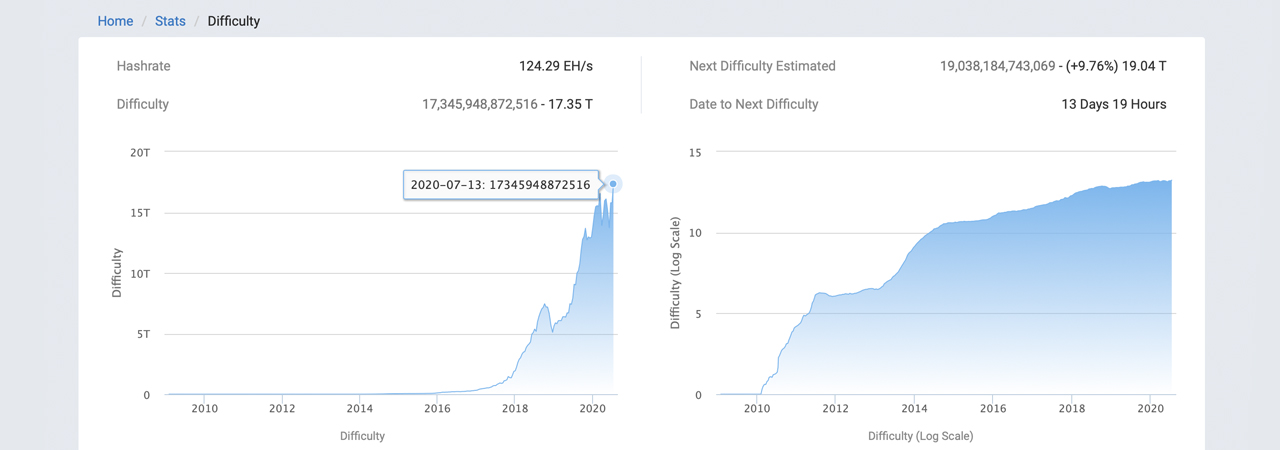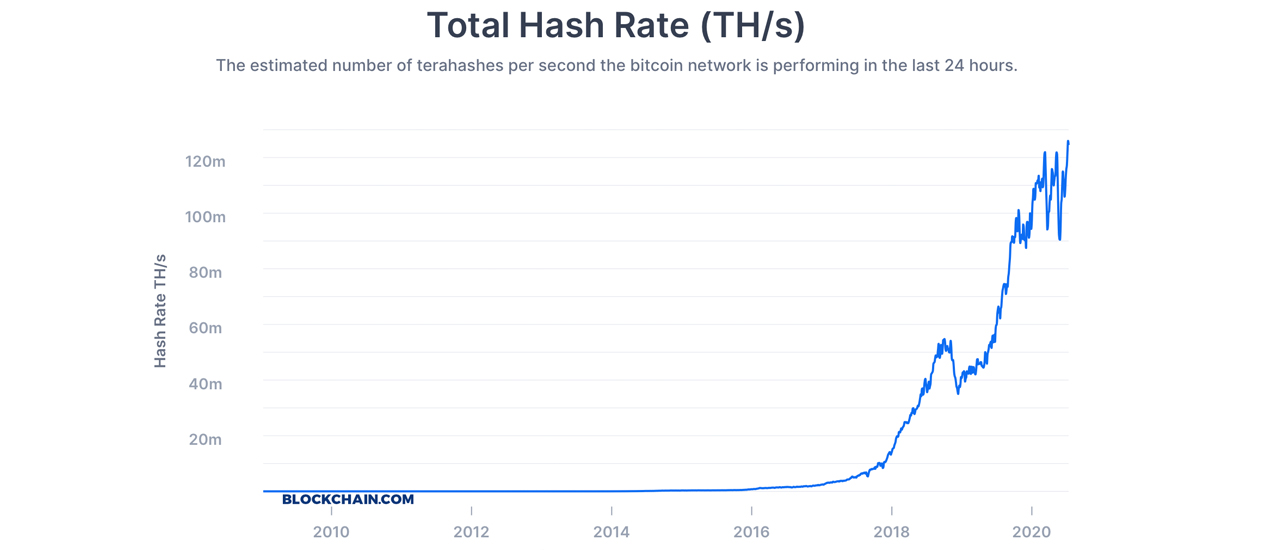The network difficulty for the Bitcoin network spiked over 9.8% on Monday bringing the difficulty to its highest point ever. The record high of 17.35 trillion makes it much harder for bitcoin miners to profit. However, the overall Bitcoin network hashrate has remained consistently above the 120 exahash per second (EH/s) zone.
On July 13, 2020, the Bitcoin (BTC) network saw it’s largest difficulty metric ever, as it touched the 17.35 trillion mark on Monday. Basically, difficulty is the value used to measure how difficult it is to find a hash below a target defined by the Bitcoin network.
The network has a global block difficulty and validated blocks must have a hash below the given target. Essentially the lower the difficulty, the easier it is to find blocks on the BTC network, and the higher the difficulty means acquiring bitcoins via mining is much harder. The difficulty changes every two weeks depending on hashrate speed or approximately every 2016 blocks.

The 17.35 trillion is the highest the difficulty has ever been, which means it is the most difficult time ever to mine bitcoins right now. Moreover, it was only just recently on May 11, 2020, when the block reward was cut in half, and miners saw 50% revenue losses overnight.
Now the upwards spike in difficulty over 9.8% wasn’t as large as the 14.95% jump on June 16, 2020. However, at that time the difficulty was only 15.78 trillion. The second-largest difficulty height happened three days before the grueling March 12 market crisis, otherwise known as ‘Black Thursday.’

Despite the jump in difficulty to 17.35 trillion, the overall BTC global hashrate has remained high above the 120 EH/s range. There are 16 unique mining pools hashing away at the BTC network and the top mining pool is F2pool.
This is followed by operations such as Poolin, Btc.com, Antpool, and Huobi respectively. F2pool’s hashpower is roughly 16% of the network while Poolin has a touch over 15%. The latter three pools have around 10% or more of the entire BTC global hashrate.
The hashrate increase has bitcoiners discussing the mining difficulty situation via social media and crypto forums. Many are conversing about the overall security of the BTC network and whether or not the hashrate will drop or rise from here.
If the overall BTC hashrate continues to climb higher, then the difficulty will rise again in two weeks’ time. If there is a substantial exodus of miners shutting down machines temporarily, then the difficulty will drop after the next 2016 blocks are consumed.
What do you think about the Bitcoin network’s difficulty jumping to its highest metric ever? Let us know what you think about this subject in the comments section below.
Image Credits: Shutterstock, Pixabay, Wiki Commons, Btc.com, Blockchain.com,
Disclaimer: This article is for informational purposes only. It is not a direct offer or solicitation of an offer to buy or sell, or a recommendation or endorsement of any products, services, or companies. Bitcoin.com does not provide investment, tax, legal, or accounting advice. Neither the company nor the author is responsible, directly or indirectly, for any damage or loss caused or alleged to be caused by or in connection with the use of or reliance on any content, goods or services mentioned in this article.







